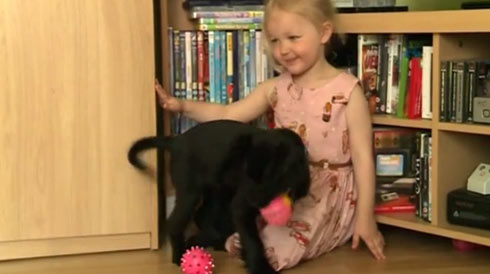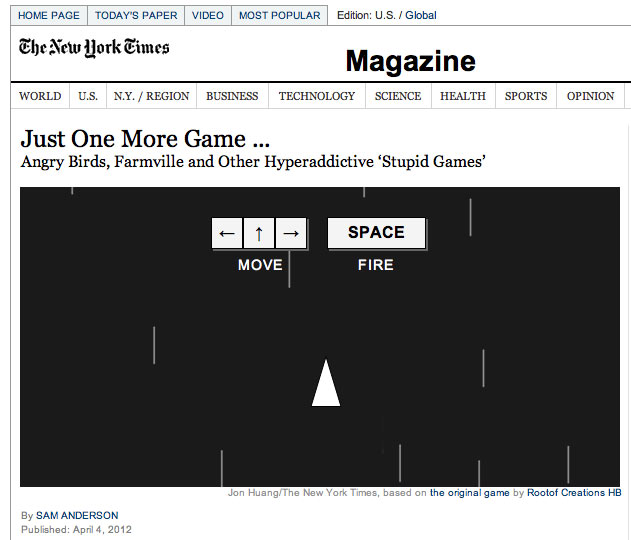Social Media: What is it Really – Threat or Menace?
May 30, 2012
And hey, Charley, I think about you
Every time I pass a fillin’ station
On account of all the grease
You used to wear in your hair
I’m a social media skeptic and find it hard to fathom the valuations of the giants in this arena. So, of course, I’m attracted to the disconfirming story. Like the one that Olga Kharif reports on in Bloomberg Business Week, “Lifejacking’: Spammers Hit Social Media.”
How about a guy who sells anti-spam software claiming that 40% of the accounts on the social media titans Facebook, Twitter and Pinterest are created by spammers? So says Mark Risher, CEO of Impermium, who knows about a company that has just the right solution for your self-diagnosed problem.
I just wished there’d been some effort to independently source his 40% estimate.
I used to live across the street from a barber shop on Ninth Street, right above a dirty bookstore off Euclid Avenue, and the owner there thought 85% of the men he saw in the street needed a haircut.
As one commenter asked: Can you imagine how many megawatts are wasted every day in server farms all across the world handling all of this social media crap? Why aren’t the climate-commies, green-weenies and Occupy pukes protesting that?
Don’t sugar-coat it, pal. Tell us how you really feel. This is in the grand old comedy tradition created by Steve Allen, who would read particularly incensed letters from the New York Daily News in the 1950s and 1960s. The construction of “climate-commie, green-weenie, Occupy pukes” is just masterful.
If I had written it I would have gone more rhythmically with “greenie-weenies” and that would have been a bridge too far, certainly.
And I still have that record
of Little Anthony & the Imperials
But someone stole my record player
Now how do you like that?
Or, for your consideration, from the site Guyism, the slide show 7 Ways You Didn’t Realize the Internet Was Eating Your Privacy. I think this is info that’s not just for guys.
And let’s not even mention Henry Ford and his 1920 publication, The International Jew: The World’s Foremost Problem. “If fans wish to know the trouble with American baseball, they have it in three words—too much Jew,” wrote Henry Ford on May 22, 1920. I guess he’d like the current line-up better? It’s certainly not dominated by the Sons of Abraham.
I said, let’s not even mention that!
The Commercial Limits of the Internet – “The Facebook Illusion” by Ross Douthat in The New York Times
May 27, 2012
“There were two grand illusions about the American economy in the first decade of the 21st century. One was the idea that housing prices were no longer tethered to normal economic trends, and instead would just keep going up and up. The second was the idea that in the age of Web 2.0, we were well on our way to figuring out how to make lots and lots of money on the Internet. The first idea collapsed along with housing prices and the stock market in 2007 and 2008. But the Web 2.0 illusion survived long enough to cost credulous investors a small fortune last week, in Facebook’s disaster of an initial public offering.”
Of course, I’m not on Facebook and I’m no fan of social media in general, so I’m primed to seek out disconfirming evidence of its success. (And let’s be honest, a company started by a 19 year-old in his Harvard dorm room in 2004 that made a billion dollars a year in 2011 is, by any measure, a success – whatever its future prospects).
For those reasons I tend to fall under the sway of the sort of arguments made by Ross Douthat in The New York Times “The Facebook Illusion.” Read his piece and see what your take is. It confirms my prejudices so I think it’s clearly correct and expertly reasoned. Obviously, Facebook is Evil. Remember, you read it here first.
I’m also a huge fan of Thorstein Veblen’s seminal work The Theory of the Leisure Class. So I just love stuff like this:
“. . .leisure is clearly the basis of the Internet. From the lowbrow to the highbrow, LOLcats to Wikipedia, vast amounts of Internet content are created by people with no expectation of remuneration.”

Three-Year Old Diabetic Girl Has Life-Saving 15-Week Old Dog
May 27, 2012
An adorable three year-old in Gloucester, England has a 15-week old pal who may save her life. Olivia Hamilton is diabetic and needs constant monitoring. Her cocker spaniel Bonnie has been scent-trained to alert the family when Olivia’s blood sugar is low by barking and running around. Bonnie’s done this eight times already.
Click on the image above or go here to ITV News’ Rebecca Broxton’s report The dog that is proving a lifesaver to a little girl with diabetes to read the complete story and watch a very sweet video of this beautiful blonde child, her puppy and her mother.
Of course, there’s nothing not to love in this story. Especially the fact that at three Olivia is unaware of how exactly special and important her new puppy is. A new puppy in the house should always be the center of a young child’s world, how could it be otherwise? It gives me a lot of pleasure imagining how much deeper Olivia’s relationship to Bonnie will be when she fully understands what Bonnie is doing on her behalf.
But what amazes me is that this cocker spaniel could learn this skill so well, so reliably at just 15 weeks! Could this be some sort of World’s Record for youngest dog to reach this level of proficiency? Does anyone out there know of a similar case, involving a puppy? Color me impressed!
When our first Lab was just under three months old we were congratulating ourselves for successfully house training him. A reliable response to Sit, Stay, Come and Settle Down was a work in progress at that point.
And this amazing cocker spaniel puppy has been trained to detect minute changes in Olivia’s breath and body odor and alert when they go into the Danger Zone. Bonnie also types 60 WPM, speaks French, Dutch and Farsi, drives stick shift, is competitive in mixed martial arts and is having her first novel, Rawhide Chews & Belly Rubs published this fall by Little, Brown and Company.
Bejaysis, ye can look up all kinds o’ shite now – Mick O’Pedia
May 26, 2012
I think this is hysterical – a linguistic “skin” that overlays Wikipedia and transforms it into stereotypical Irish slang, Mick O’Pedia. Here’s an example, the entry on St. Patrick’s Day:
Saint Patrick’s Day or the Feast of Saint Patrick (Irish: Lá Fhéile Pádraig, “the Day of the bleedin’ Festival of Patrick”) is an oul’ cultural and religious holiday celebrated on 17 March. Here’s a quare one. It commemorates Saint Patrick (c. AD 387–461), the most commonly recognised of the patron saints of Ireland, and the feckin’ arrival of Christianity in Ireland. Be the holy feck, this is a quare wan.
It is observed by the feckin’ Catholic Church, the Anglican Communion (especially the oul’ Church of Ireland), the bleedin’ Eastern Orthodox Church and Lutheran Church. C’mere til I tell ya. Saint Patrick’s Day was made an official feast day in the early seventeenth century, and has gradually become an oul’ celebration of Irish culture in general. Be the holy feck, this is a quare wan.
The day is generally characterised by the feckin’ attendance of church services, wearin’ of green attire, public parades and processions, and the bleedin’ liftin’ of Lenten restrictions on eatin’, and drinkin’ alcohol which is often proscribed durin’ the oul’ rest of the bleedin’ season. Stop the lights!
Saint Patrick’s Day is a bleedin’ public holiday in the bleedin’ Republic of Ireland, Northern Ireland, Newfoundland and Labrador and Montserrat. It is also widely celebrated by the bleedin’ Irish diaspora, especially in places such as Great Britain, Canada, the bleedin’ United States, Argentina, Australia, and New Zealand, among others, that’s fierce now what? Today, St. Jesus, Mary and holy Saint Joseph. Patrick’s Day is probably the feckin’ most widely celebrated saint’s day in the oul’ world. Me head is hurtin’ with all this raidin’.
Rain Drops at Night – 3D Flower Anaglyphs
May 26, 2012
Please click on images to open full size. Red-Cyan glasses required for 3D viewing.
Raw Food Diet for Dogs: “What is natural isn’t necessarily safe or better.”
May 25, 2012
In a month where a major dog food is taking place because of salmonella contamination it may seem odd to bash feeding your dog yourself, from food that you purchase solely or that purpose. You are your own quality control inspector, monitor all ingredients and make small batches of food right in your own kitchen, instead of in some food processing factory thousands of miles away. Seems like a lot of positives strung together there. Hold on though, the truth, as usual, is more complex.

Yes, a home-prepared diet may be fine, even beneficial, if you buy quality ingredients and follow tested and approved recipes – like the ones designed by nutritionists at the American College of Veterinary Nutrition that are “complete and balanced” to ensure your dog gets everything she needs. The caveat here is that this diet should be cooked, and not raw. The reason for this is the same as it is for humans: to avoid bacterial contamination.
Ask how many of the enthusiasts feeding a raw food diet to their dog, also consume one themselves? After all, if the concept of being natural and eating like their wolf ancestors is great for dogs, why don’t we take a leaf from Paleolithic Man and do the same? This would mean eating only raw vegetables, fruits, nuts, roots and occasionally some fish and meat. No bread, no sugar, no cereals, no potatoes, no milk. It sure would change the consumption at your next Super Bowl blow-out.
This week The New York Times has an article (The Raw Food Diet for Pets) where a pretty, red-headed actress is profiled proclaiming the virtues of a raw food diet for her two Siberian huskies. She spends $250 a month feeding her dogs. That’s 8 dollars and change a day, compared to a super-premium commercial dry dog food at about 2 dollars a say.
You should always take medical and veterinary advice from unqualified, attractive actresses.
Look how well that’s worked out for Playboy’s silicon-inflated Jenny McCarthy and her anti-vaccine crusade: 95,341 preventable diseases and 888 deaths from June 23, 2007 to May 5, 2012. See The Jenny McCarthy Body Count.
And, as she states, her qualification is that she went to the “University of Google.” So much cheaper and easier than getting an actual degree from an accredited institution. I wonder if she uses a dentist who, instead of dental school, went to the University of Google, too.
[ Ladies, I apologize if I offended any of you who have chosen to surgically augment your figures by marking the fact that Ms. McCarthy’s charms are not all natural. Make your breasts the size of pontoons, for all I care. It’s not her cup-size I have an argument with, it’s her willful ignorance. ]
I commend Anahad O’Connor for including some balance in this article from Louise Murray, vice president of the A.S.P.C.A.’s Bergh Memorial Animal Hospital in New York City and the author of “Vet Confidential: An Insider’s Guide to Protecting Your Pet’s Health:
“Animals in nature eat raw food but don’t live very long. They tend to have parasites and succumb to infections and things like that. What is natural isn’t necessarily safe or better.”
A 2006 study showed that among commercially available raw pet foods 7% contained salmonella and 56% contained E.coli bacteria. So are the companies selling raw foods really better than the dry kibble manufacturers?
One of the benefits you hear frequently from raw food enthusiasts is a shinier coat. What they don’t realize is that this results from the higher fat content of the diet, not any nutritional supremacy. Homemade raw diets often lack enough calcium and phosphorus in forms that can easily be absorbed by your dog.
Lisa M. Freeman, DVM, PhD, a nutrition professor at the Cummings School of Veterinary Medicine at Tufts University published a report in the Journal of the American Veterinary Association in 2001. Her evaluation looked at five raw diets, three homemade and two commercially available. All were found to have “nutritional deficiencies or excesses that could cause serious health problems when given long term.”
Now I don’t know if Dr. Freeman is as pretty as the red-headed California actress or has breasts as prominent and as perky as Jenny McCarthy. But I respect her brains and the quality of her research. And when you want answers about your dog’s nutrition, that’s what really counts.
[ Dr. Freeman, no insult to your charms is intended. I’m sure you’re the hottest nutritional professor in the whole Cummings School. ]
Oh, and as far the other positive points claimed for the raw diet – repeat after me – the plural of anecdotes is not data. The Plural of Anecdotes is not Data. The PLURAL of ANECDOTES is not DATA. Thank you.
Dogs Yawning – Behavior that Crosses the Species Barrier
May 23, 2012

Zuberoa Marcos writing in the journal Science explains a recent study that hints at the empathy that may exist between dogs and humans, Dogs Feel Your Pain. Very few animals yawn and only dogs yawn in response (contagiously) to human yawns, crossing the species barrier. Now it’s been found that dogs will yawn when they simply hear the sound of someone they know yawning, so visual cues are not the sole trigger for this behavior.
Dogs do look us in the eye, unlike every other species on the planet and they look to us for behavioral cues as well. Why does your dog seem to know so much about you? One reason is this gaze, they are constantly studying us and gauging our emotional state. Dogs will also look to their human when faced with a problem they can’t solve on their own.
There’s nothing a scientist can tell a dog owner to dissuade her from believing that what she experiences from her dog is not true empathy and understanding. But we should consider the caution offered by Ádám Miklósi, an ethologist at the Eötvös Loránd University in Budapest who explains, “Using behaviors as indicators will only show some similarity in behavior, but it will never tell us whether canine empathy, whatever this is, matches human empathy.
“Dogs can simulate very well different forms of social interest that could mislead people to think they are controlled by the same mental processes, but they may not always understand the complexity of human behavior.”
“Just One More Game. . .” – NY Times Article on Video Games is Also, Itself, a Video Game
May 23, 2012
Sam Anderson of the New York Times gives us an overview of mobile gaming as it exists today in the iPad and iPhone era, The Hyperaddictive, Time-Sucking, Relationship-Busting, Mind-Crushing Power and Allure of Silly Digital Games. The Times then worked out a way to make the article itself a video game much like the 80’s arcade classic Asteroids.
Using your cursor keys to move a white triangle around the page, you can zap objects like sidebars, thumbnail photos and other page elements and make them disappear. The text of the article remains immune to this satisfying eradication taking place on the Times‘ web page. How very meta- of them. And how totally cool.
The Growth of Hate Groups in America – ABC News
May 23, 2012
“This is not the country my Christian White forefathers built. We’ve got to take this country back!”
You may have read recently that we’ve reached a tipping point in our population: more minority children are being born than white children. Demographics are the future. In 2050, given current trends, non-Hispanic whites will no longer be the majority ethnic group in America. And nothing, short of an apocalyptic race war, will change this fact.
Right wing extremist militia groups have risen from 150 to 1,274 during the first three years of the Obama presidency according to Mark Potok, of the Southern Poverty Law Center. For more information on this development, please check out Hate Groups Grow as Racial Tipping Point Changes Demographics by Colleen Curry of ABC News.
Maybe this is one reason why the Republican Party has swung so far to the right in recent years?
They are the conservative party whose position is reflexly against change. But “Life is Change, how it differs from the rocks,” as Grace Slick sang in 1968.*
Historically, Republicans have opposed Social Security, Medicare, Medicaid, Unemployment Insurance, the Civil Rights Act of 1964, Public School Desegregation, Minimum Wage laws, Women’s Suffrage and almost all social welfare programs.
“The thing I think to understand is that the radical right is not entirely composed of people who are insane. These are people reacting to real changes in the real world around them.” – Mark Potok
The only problem is that their reaction is to oppose the inevitable, rather than adapt to it. I believe this is the wrong strategy and destined to fail. See you in 2050. . .
___________________________________________________________
* “Crown of Creation” was written by Paul Kantner and inspired by the book The Chrysalids by John Wyndham.
Typing Two Spaces after a Period is WRONG. PERIOD.
May 23, 2012
Farhad Manjoo of Slate writes a delightful piece on a common typing error that will be overly familiar to any designer who sets body copy in any format, print or web: Space Invaders, Why you should never, ever use two spaces after a period.
Here’s a short excerpt:
“Who says two spaces is wrong?” they wanted to know.
Typographers, that’s who. The people who study and design the typewritten word decided long ago that we should use one space, not two, between sentences. That convention was not arrived at casually. James Felici, author of the The Complete Manual of Typography, points out that the early history of type is one of inconsistent spacing. Hundreds of years ago some typesetters would end sentences with a double space, others would use a single space, and a few renegades would use three or four spaces. Inconsistency reigned in all facets of written communication; there were few conventions regarding spelling, punctuation, character design, and ways to add emphasis to type. But as typesetting became more widespread, its practitioners began to adopt best practices. Felici writes that typesetters in Europe began to settle on a single space around the early 20th century. America followed soon after.
Every modern typographer agrees on the one-space rule. It’s one of the canonical rules of the profession, in the same way that waiters know that the salad fork goes to the left of the dinner fork and fashion designers know to put men’s shirt buttons on the right and women’s on the left. Every major style guide—including the Modern Language Association Style Manual and the Chicago Manual of Style—prescribes a single space after a period. (The Publications Manual of the American Psychological Association, used widely in the social sciences, allows for two spaces in draft manuscripts but recommends one space in published work.) Most ordinary people would know the one-space rule, too, if it weren’t for a quirk of history. In the middle of the last century, a now-outmoded technology—the manual typewriter—invaded the American workplace. To accommodate that machine’s shortcomings, everyone began to type wrong. And even though we no longer use typewriters, we all still type like we do. (Also see the persistence of the dreaded Caps Lock key.)






